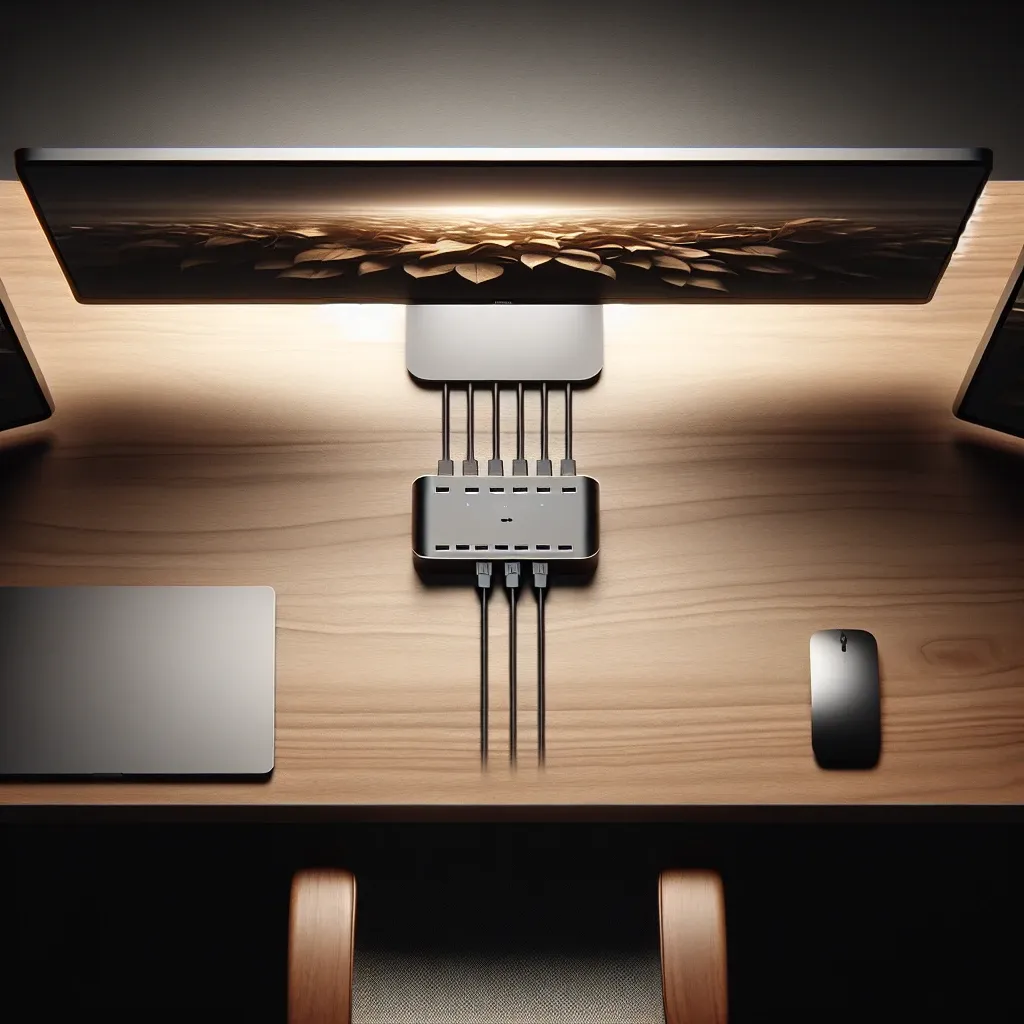Introduction
As technology advances, more people are utilizing multiple monitors to enhance productivity and create a more immersive computing experience. However, connecting multiple monitors can often be a challenge, especially if your computer or laptop lacks sufficient ports. This is where USB hubs come into play, facilitating easy connections between your monitors and your device. In this article, we will explore the best USB hubs for connecting multiple monitors, evaluating their features, capabilities, and user experiences.
| USB Hub Model | Ports | Max Resolution | Data Transfer Speed | Power Supply |
|---|---|---|---|---|
| HooToo USB C Hub | 4x USB 3.0, 1x HDMI | 4K@30Hz | 5Gbps | Powered |
| Belkin USB-C Multimedia Hub | 2x USB 3.0, 1x HDMI, 1x Ethernet | 4K@60Hz | 5Gbps | Powered |
| ORICO USB 3.0 Hub | 7x USB 3.0 | N/A | 5Gbps | Unpowered |
| UGREEN USB C Hub | 3x USB 3.0, 1x HDMI, 1x SD Slot | 4K@30Hz | 5Gbps | Powered |
| Inateck USB 3.0 Hub | 4x USB 3.0, 1x Type-C | N/A | 5Gbps | Unpowered |
What to Consider When Choosing a USB Hub for Multiple Monitors
Selecting the best USB hub for your multi-monitor setup requires careful consideration of various factors. Here are the essential aspects to keep in mind:
- Number of Ports: Ensure that the USB hub has enough ports for all your monitors and additional devices.
- Display Resolution: Check the maximum resolution that the hub can support for each monitor.
- Data Transfer Speed: Look for hubs that offer high-speed data transfer, preferably USB 3.0 or higher.
- Power Supply: Determine whether the hub is powered or unpowered, as powered hubs provide sufficient energy for multiple devices.
- Compatibility: Ensure that the hub is compatible with your operating system and hardware.
Top USB Hubs for Connecting Multiple Monitors
1. HooToo USB C Hub
The HooToo USB C Hub is a highly versatile option, offering multiple USB 3.0 ports and an HDMI output. It supports a maximum resolution of 4K at 30Hz, making it suitable for most modern monitors.
Features:
- 4 USB 3.0 ports for fast data transfer
- 1 HDMI port supporting 4K@30Hz
- Compact design for easy portability
2. Belkin USB-C Multimedia Hub
This hub is known for its robust performance and array of connectivity options. The Belkin USB-C Multimedia Hub supports dual 4K displays at 60Hz, making it an ideal choice for high-end setups.
Features:
- Multiple ports including 2 USB 3.0 and 1 HDMI
- Supports 4K@60Hz output
- Built-in Ethernet for stable internet connection
3. ORICO USB 3.0 Hub
The ORICO USB 3.0 Hub is perfect for those looking for an unpowered hub with multiple USB ports. It’s suitable for connecting various USB devices, although it does not support video output.
Features:
- 7 USB 3.0 ports for extensive connectivity
- No video functionality
- Compact and lightweight
4. UGREEN USB C Hub
This versatile hub offers both USB 3.0 ports and HDMI output, ideal for those requiring additional functionality such as an SD card slot.
Features:
- Multiple USB ports and an HDMI port
- 4K@30Hz output capability
- SD and TF card slots for memory expansion
5. Inateck USB 3.0 Hub
The Inateck USB 3.0 Hub is a simple, cost-effective solution for adding USB ports to your setup, without video output capabilities.
Features:
- 4 USB 3.0 and 1 Type-C port
- Affordable price
- No video output, makes it suitable for data transfers
How to Set Up a USB Hub for Multiple Monitors
Setting up a USB hub for multiple monitors can be a straightforward process. Follow these steps for a smooth installation:
- Choose the Right Hub: Based on the specifications listed above, select a hub that fits your needs.
- Connect the Hub: Plug the USB hub into an available USB port on your computer.
- Plug in Your Monitors: Connect your monitors to the hub’s output ports.
- Install Drivers: Ensure that any necessary drivers for the hub are installed on your computer.
- Adjust Display Settings: Go to your display settings to configure monitor arrangements, resolution, and scaling options as required.
Best Practices for Using USB Hubs with Multiple Monitors
To ensure optimal performance while using USB hubs with multiple monitors, consider the following best practices:
- Use High-Quality Cables: Always opt for high-speed HDMI or USB cables to maintain a stable connection.
- Keep Firmware Updated: Regularly update the hub’s firmware to ensure compatibility and performance.
- Limit the Number of Devices: Avoid connecting too many devices to one hub to prevent power and bandwidth issues.
- Monitor Temperature: Keep an eye on the temperature of the USB hub, as overheating can lead to reduced performance.
Conclusion
Choosing the best USB hub for connecting multiple monitors involves a careful evaluation of your specific needs, including the number of ports required, display capabilities, and energy requirements. By selecting a high-quality USB hub, you can create a robust multi-monitor setup that enhances your productivity and overall computing experience. Always remember to follow best practices to get the most out of your USB hub and stay connected without interruptions.

